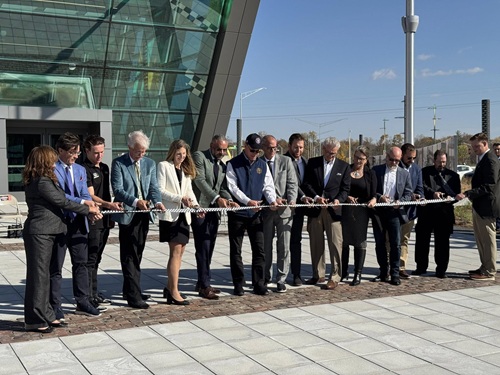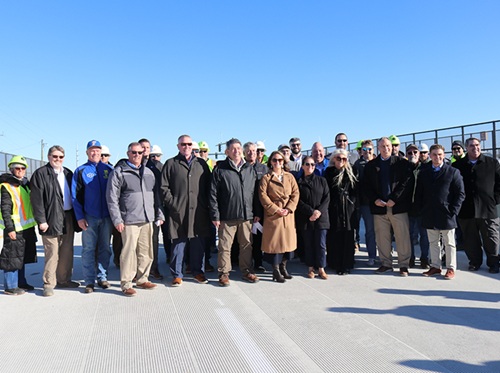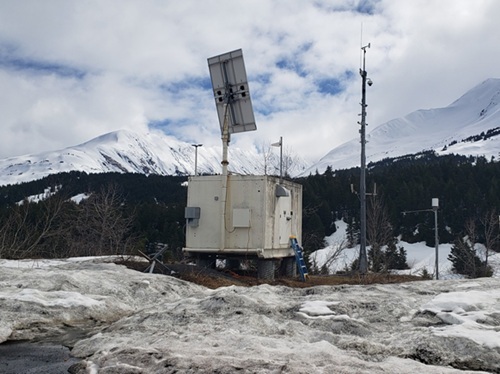As part of a multi-year modernization effort, the Alaska Department of Transportation & Public Facilities has upgraded its statewide Road Weather Information System or RWIS; including the deployment of solar-powered weather cameras and broad repairs across its highway monitoring network.
[Above photo by Alaska DOT&PF]
The Alaska DOT&PF said the state’s RWIS system provides essential real-time weather and road condition information for travelers, emergency responders, and maintenance crews.
Across Alaska’s vast, rural, and often remote transportation network, such highway cameras are often the first – and sometimes only – way to assess conditions quickly and accurately, the agency noted.
Currently, Alaska DOT&PF’s RWIS network includes over 75 camera systems monitoring key routes across all regions of the state. Since 2023, the department has repaired, replaced, or upgraded over 20 camera systems, improving reliability and restoring functionality to sites that had long been offline due to age, power failures, or extreme weather.
[Editor’s note: The video by the Utah Department of Transportation below outlines the value of RWIS networks to the agency and the motoring public.]
While the primary audience of the cameras are highway travelers, the department has found that Alaskans utilize the cameras for a variety of purposes, including aviation, with pilots checking areas for ground conditions, and back country travelers for avalanches caught in the background of images.
“This is not just about one camera – it’s about modernizing an entire system that allows us to be proactive, efficient, and responsive,” said Alaska DOT&PF Commissioner Ryan Anderson in a statement. “The work we’ve done to repair and upgrade our RWIS infrastructure is making it easier for both the public and our crews to stay informed and stay safe.”

He noted that RWIS system upgrades not only reduce on-site maintenance needs but also feed directly into improved maintenance management practices. Enhanced real-time data from restored cameras empowers the agency to deploy snowplows, roadway sanding equipment, and incident response more precisely – saving operator time, materials and fuel.
“Our goal is to maintain safety and reliability across the system, and that means investing in tools that help our people be as efficient as possible,” Anderson pointed out.
The agency added that one notable “success story” in this upgrade effort involves the Turnagain Pass RWIS station on the Seward Highway. The site was recently converted to 100 percent solar power following a prolonged outage caused by generator failure.
With new low-power cameras and high-capacity battery storage, this remote system now operates year-round – even through Alaska’s darkest months – without the need for fuel deliveries or regular maintenance, Alaska DOT&PF said.
 States
States
INDOT Celebrates New I-70 Welcome Center Opening
November 21, 2025 States
States

